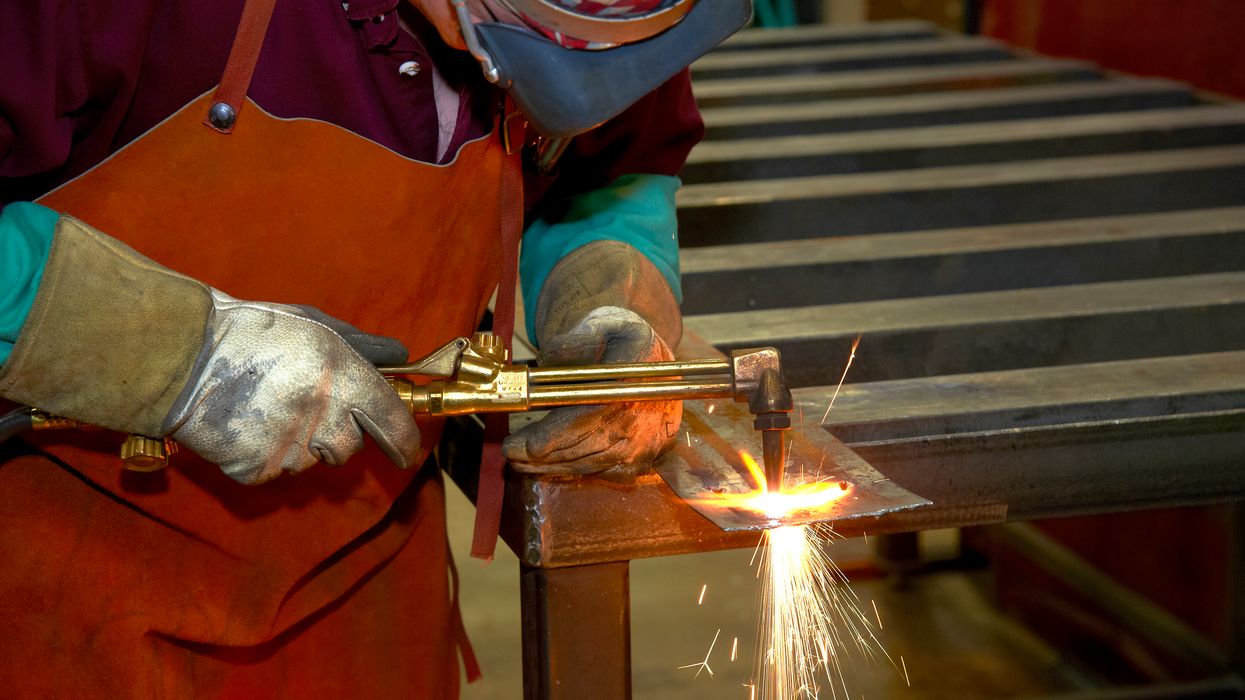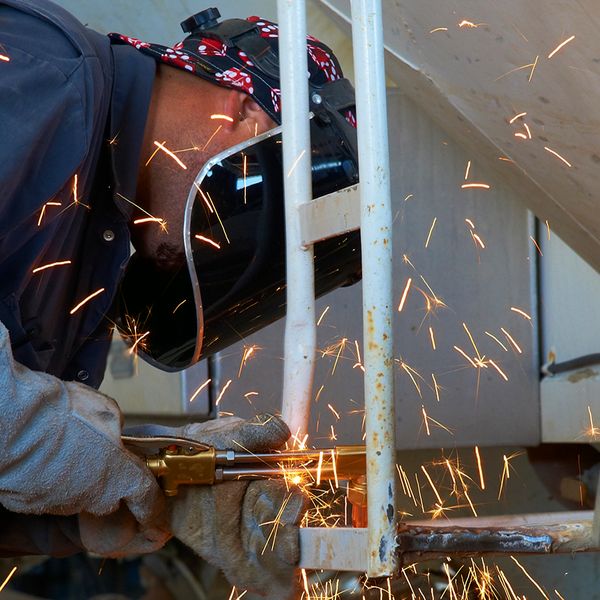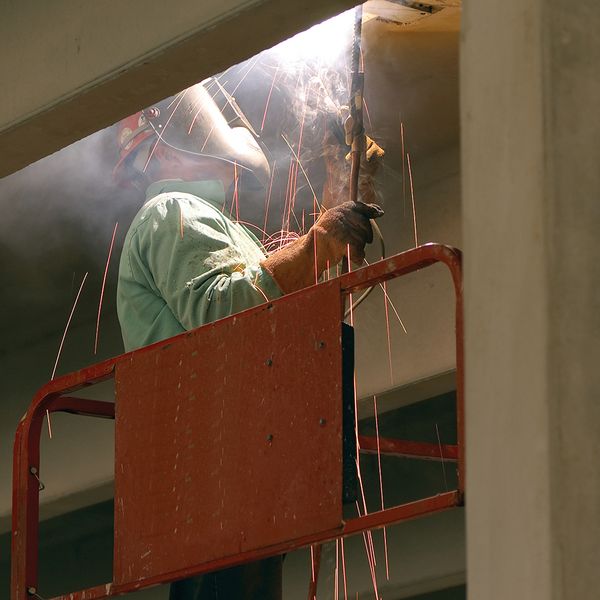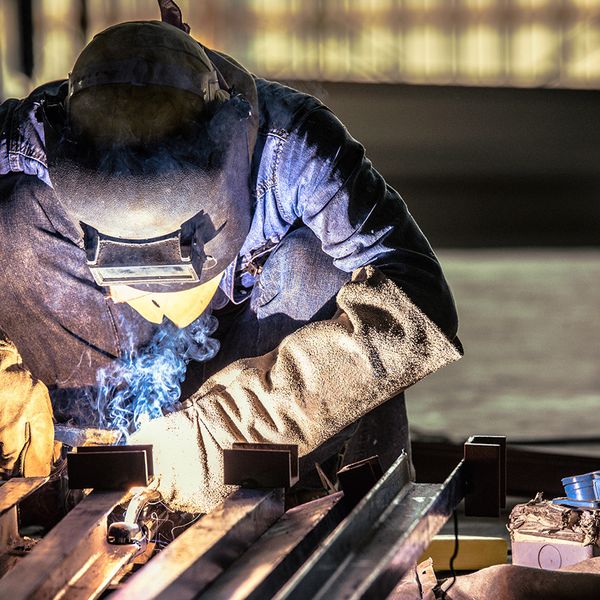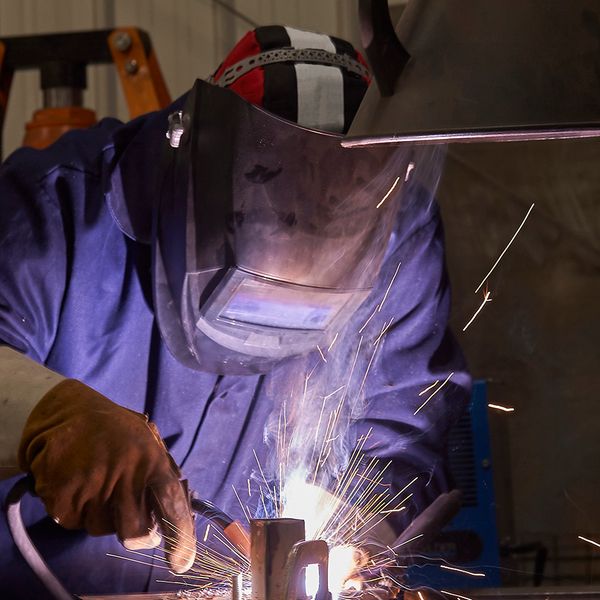Hot work handout
Don’t let hot work incidents burn your safety program
All hot work activity should be moved to a designated area on the jobsite per OSHA 1926.352, Fire prevention. Hot work occurs when the work process requires welding, cutting, or heating of materials or surfaces. Using safe work practices can prevent injuries and property damage from occurring. Four safety controls that are essential to hot work safety are:
- Work area assessment,
- Fire prevention,
- Fire watch, and
- Training.
Work area assessment
A competent person must assess the work area and determine if its feasible to move the hot work activities to a designated hot work area or if it must be performed in place. If the objects or materials that will be welded, heated, or cut cannot be moved to a designated hot work area, safety controls must be used to prevent a fire. In construction, it’s a best practice to authorize all hot work using a permit.
Drum containers and hollow structures must be assessed for flammable substance residue before welding, cutting, or heating occurs on them. The residue should be cleaned and removed, or fill the drum with water to prevent a fire or explosion. When flammable substance residue is heated and reaches its flashpoint, vapor can ignite, causing a fire or explosion.
Fire prevention
Three hot work hazards that must be controlled to avoid a fire are:
- Heat,
- Sparks, and
- Slag.
These three hazards are ignition sources that can cause a fire if there is a sufficient source of fuel nearby. Flammable paints and compounds, heavy dust concentrations, and combustibles are all common fuel sources on jobs that should be moved away from hot work activity.
Place appropriately sized fire extinguishers in the immediate area where hot work occurs in case a fire starts. The fire extinguisher must be in a state of readiness for immediate use. If you cannot move hot work activities to a designated area, use other resources like fire blankets to contain sparks.
Fire watch
Designate a fire watch to monitor hot work activities for fire hazards. Ensure the fire watcher:
- Is not assigned other work duties to avoid distractions, and
- Observes the work area for enough time after hot work is finished to make sure a fire does not start.
Section 1926.352 doesn’t specify how long the fire watch should remain after work was completed, but it is best practice to keep the fire watch in place for at least 30 minutes after the hot work has stopped. Also, ensure that your insurance company doesn’t have specific fire watch requirements. Some policies require a 60-minute fire watch after all hot work is finished.
Training
Standard operating procedures should be developed onsite that address hot work activities. Train workers on using a fire extinguisher if one is provided for them to use. It is highly recommended to offer classroom instruction, but workers should have hands-on training too. Train workers about fire hazard recognition and prevention controls so they know how to make adjustments to prevent a fire while performing hot work.
For example, workers should know that heat transfer from their hot work to an adjacent area could cause a fire. Also, welding gases should be placed outside enclosed spaces where welding occurs, and before breaking for lunch, be sure to shut off the gas at the regulator outside the space, not just at the torch head. An adverse atmosphere and fire hazards can develop if the regulator or torch head leaks and is left inside the enclosed space.

